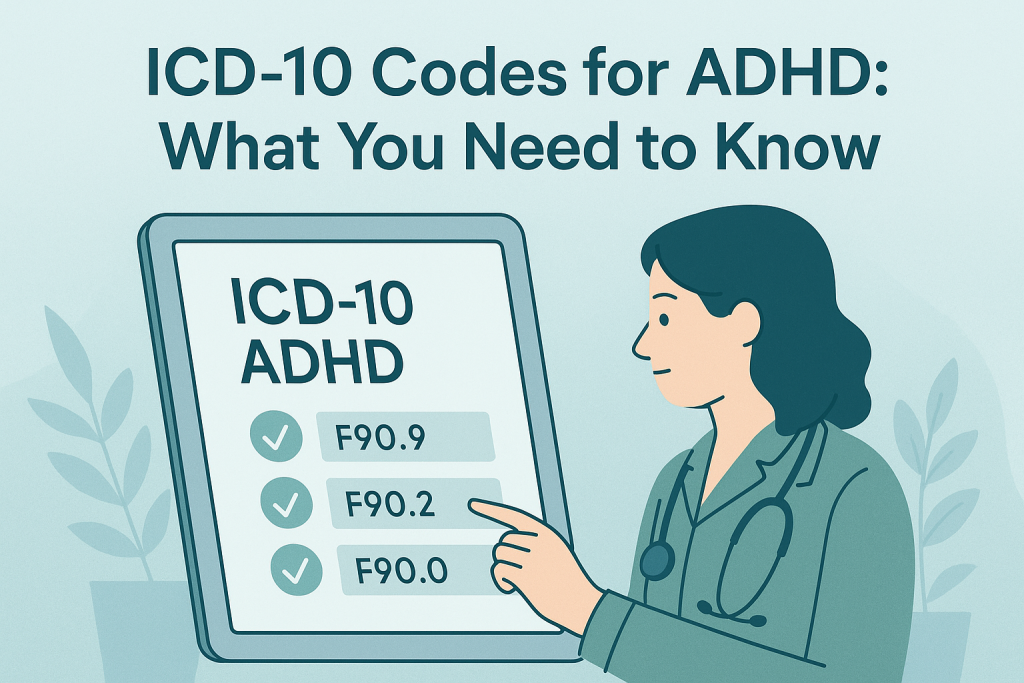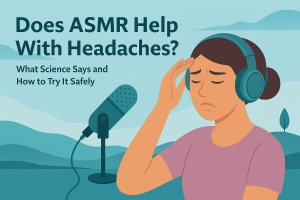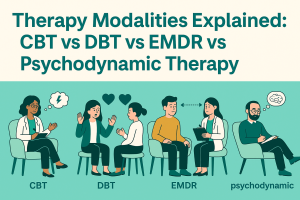ICD-10 Codes for ADHD: What Clinicians Must Know
Correct coding protects your claims, keeps charts audit-ready, and clarifies care. Below is a quick, visual guide to the ADHD codes you’ll use most—plus exclusions, look-up tips, DSM differences, and real-world examples.
Most common ICD-10 ADHD codes
ADHD appears in the F90 family (Hyperkinetic/Attention-Deficit disorders). These are the codes you’ll reach for most often:
Predominantly inattentive
- Inattention symptoms meet threshold
- Hyperactive/impulsive symptoms not prominent
- Document functional impact + onset
Predominantly hyperactive-impulsive
- Hyperactivity/impulsivity meets threshold
- Inattention not predominant
- Note behavior across settings
Combined presentation
- Both domains documented
- Often most specific code when criteria met
- Supports clearer medical necessity
Other specified
- Diagnosis confirmed; atypical presentation
- Describe the “other” spec in note body
Unspecified
- Use sparingly—subtype unclear
- Revisit once more data available
How to find other ADHD ICD-10 codes
Use official ICD browsers
Check local (ICD-10-CM) variations
Document clarity in the chart
Exclusions & coding rules
Exclusion notes prevent overlap or miscoding. ADHD codes commonly require you to consider—and separately code—conditions that co-occur but are not part of ADHD.
ICD specifiers vs DSM-5 presentations
ICD-10
- F90.0 / F90.1 / F90.2 map to inattentive, hyperactive-impulsive, combined
- More static—recode when presentation changes
- Historically less permissive of ASD + ADHD
DSM-5
- “Presentations,” not fixed subtypes
- Allows symptom profile to evolve
- ADHD and ASD can co-occur when criteria are met
Remember: DSM guides diagnosis formulation; ICD codes drive billing and global data standards. Your note should justify the chosen ICD code using DSM-style criteria language.
Real-world coding examples
8 inattentive + 7 hyperactive/impulsive symptoms across school & home; onset before age 12; interference present. ICD-10: F90.2 (combined) Doc cue: Include teacher collateral + impairment examples.
9 inattentive sx; minimal hyperactivity; impairment in work tasks & time mgmt; childhood history noted via records. ICD-10: F90.0 (predominantly inattentive) Doc cue: Tie symptoms to functional outcomes (missed deadlines).
Pediatric intake; limited collateral; symptoms suggest ADHD but subtype unclear on first visit. ICD-10: F90.9 (unspecified) → plan to refine in 2 weeks Doc cue: Note parent & teacher forms pending; schedule follow-up.
ADHD coding workflow (at a glance)
Best practice: document where symptoms show up, how they impair functioning, and why your chosen ICD code best fits.
Illustrative usage (education only)
For training: relative frequency you might see in outpatient settings (illustrative, not epidemiologic data).
Key takeaways
Specificity first
Use F90.2 when both domains are documented; avoid unspecified unless truly temporary.
Document impairment
Tie symptoms to function at school/work/home. Add collateral when possible.
DSM guides, ICD bills
Explain DSM criteria in prose; select the matching ICD code for claims.
Watch exclusions
Consider anxiety, mood, ASD, and psychotic disorders when coding.
Related TherapyDial guides
Want cleaner charts and fewer denials?
We help teams standardize documentation—from intake to discharge—without adding admin drag.
Talk to a Practice Consultant



